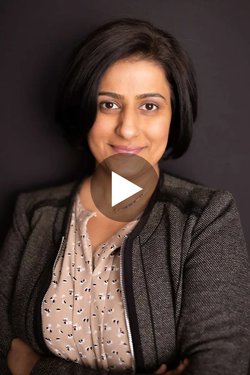Love is in the air: many loves when it comes to the wide world of polyamory and polyamorous relationships. Polyamory is a relationship model where one can have multiple partners at once and the accompanying philosophy that you can love multiple people at the same time. One purported advantage of polyamory is the freedom to create relationship dynamics that work for you and your life regardless of how popular they are in mainstream society. And there is no shortage of different dynamics and relationship structures to create or choose from. Polyamorous relationships are not a one-size-fits-all model; there is quite a bit of fluidity and flexibility in rules and dynamics.
If you’re new to the concept of polyamory, it doesn’t need to be that complicated. While everyone may have a slightly different definition, here is a list of 12 of the most common types of polyamorous relationships.
Hierarchical Polyamory
This style of polyamorous relationship organizes the multiple relationships in a hierarchy of importance, including time and resource designation. In hierarchical relationships, the partner is designated as the primary partner receiving most of the time, love, or resources. The person sitting on the next rung down from the primary is considered the secondary partner, and after that is the tertiary partner, etc.
The primary partner may be the primary because that relationship is the most important in the structure. In these cases, the primary partner may exercise ‘veto’ power over their partner’s secondary and tertiary relationships. So, if one primary partner feels that their partner’s secondary relationship is detracting from the primary relationship, they can end it.
The term primary partner can also be more descriptive due to circumstances. The primary partner may be the person with whom someone is married, lives with, raises children, or is financially intertwined. Sometimes, the term anchor or nesting partner is preferred over primary partner in this dynamic.
Non-hierarchical Polyamory
The opposite of hierarchical polyamory is non-hierarchical polyamory, also known as egalitarian polyamory, where everyone is viewed as equal and receives the same amount of love, time, and resources. In this structure, no one partner or dynamic holds more weight than another in the polycule (the name assigned to the group of people involved that form an inter-relational network). Everyone contributes equally to the relationship and decisions that affect the entire polycule.
Examples of some non-hierarchical relationship structures may include kitchen table polyamory, triads/throuples, and quads.

Kitchen Table Polyamory
A polyamorous relationship structure where a group of people, all involved in some capacity, can sit around a kitchen table like a family and talk. Kitchen table polyamory (KTP) is a relationship model where a group of people forms a network called a polycule, and everyone in the polycule is encouraged to be involved with one another to varying degrees.
Not everyone in the polycule needs to be intimately involved or even directly involved with one another, but they can be. Members of KTP could include your partner’s partners (metamours) and even their partners (telemours), depending on how big the relationship constellation becomes. In some more extreme KTP relationships, everyone co-habitats and gets an equal say in decisions that might affect the entire group dynamic. In other KTP arrangements, it’s encouraged that everyone (metamours, telemours, etc.) get along like siblings, but they may not live together or be heavily involved in each other’s life decisions.
If sitting around any table with people your partner is attracted to sounds like something from an episode of the Twilight Zone, it’s normal to feel apprehension, jealousy, or insecurity, even for those in polyamorous relationships. One of the defining concepts supporting consensual non-monogamy is compersion. Compersion is regarded as the opposite of jealousy in it’s a feeling of wholehearted happiness for your partner or someone you love experiencing pleasure and happiness, even if it’s from another person.
Idealistically, this sounds wonderful, but jealousy and insecurity are normal experiences in any relationship, so for any polyamorous relationship to function, compersion, strong communication, and emotional regulation are essential.
Parallel Polyamory
Often cited as the other end of the spectrum from kitchen table polyamory is parallel polyamory. Think of parallel polyamorous relationships like railroad tracks (hang in there, this seemingly left-field analogy will reveal itself). Railroad tracks run straight down the horizon but never intersect. In parallel polyamorous structures, you have your partner or partners, and your partners have their partners, but those relationships never cross or intersect. So, you will have limited to no interaction with your partner’s partners, called metamours.
One example of parallel polyamory is a Vee or “V” relationship, where one person dates two different people, and those two people, each other’s metamours, don’t have a relationship with one another and may never meet but know of each other’s existence.

Garden Party Polyamory
For those who don’t align with the laisse-faire love of KTP nor resonate with the strict lines of Parallel polyamory, there’s a middle ground – garden party polyamory, also known as birthday party polyamory. Garden party polyamory takes a little from both worlds and mixes and matches to create a relationship dynamic that works for all people involved.
In garden party arrangements, metamours know each other and may interact with each other, but only as it relates to their shared partner or at key communal events, like birthday parties, graduations, etc. In this arrangement, metamours may see each other weekly or only a few times a year.
Polyfidelity
Polyfidelity is when the network of people involved, the polycule, are exclusively engaged with each other. They are fully committed to the group members, and all agree not to have relations with people outside the group. This arrangement is also referred to as a closed polycule. If you like the idea of having multiple partners but prefer the safety and intimacy of a closed network of people, then polyfidelity may be the structure for you.
Relationship Anarchy
It’s not exactly Sex Pistols and punk rock anarchy, but it does borrow heavily from the zeitgeist of political anarchy. Relationship anarchy isn’t that there are no rules, but that each relationship starts as a tabula rasa – a blank slate – no expectations except the ones you and your partner or partners set. Relationship anarchy emphasizes personal autonomy where the people involved create their own relationship rules and boundaries instead of prescribing to pre-existing models or structures. People who identify as relationship anarchists often reject the concept of hierarchical relationship models.
Solo Polyamory
Solo polyamory is a model and life philosophy that emphasizes the individual agency versus the collective group and has two slightly different interpretations. Solo poly can be where a person has multiple partners but chooses to maintain their independence, whether living alone, remaining unmarried, or being financially independent. This doesn’t mean solo polyamorous people don’t have fulfilling and profound relationships, but that they don’t adhere to the idea of climbing the “relationship escalator.” Therefore, marriage, starting a family, or exclusivity aren’t the absolute end goals of their relationships.
Another definition of solo poly is more of an overarching life philosophy where an individual chooses to be their own “primary partner.” Being your own primary means you are the most important person in your life and your decisions, including relationship ones, add to your sense of independence, happiness, and wellbeing. Under this philosophy, the rules of engagement in a polyamorous lifestyle are loose and up to interpretation and personal preference.

Throuple / Triad
Ah, the beloved throuple or triad is a relationship structure in which three people are involved, whether sexually or romantically, in a relationship. And no, threesomes are not the same thing as a triad. In these arrangements, all three people may decide to live together, raise a family together, and all have an equal say in decisions impacting the relationships. Or a throuple or triad relationship can take the structure of a vee or “V.”
Vee
A vee or “V” style arrangement of three people where one person dates two people simultaneously, but those people are not dating each other. The metamours may be acquaintances or close friends, or not interested in knowing each other.
Quad
A quad is a relationship structure of four or more people in a relationship together. For example, if two couples decide to date each other and become sexually or romantically involved, this is considered a quad structure.

Polyamory is meant to be an alternative style of arranging and thinking about relationships, sexuality, communication, and structure. For some, the freedom to choose their path is empowering, and for some, it sounds like a royal headache. Whatever the choice, there is no right or wrong way to organize your relationships as long as they serve your happiness and the people involved.















































